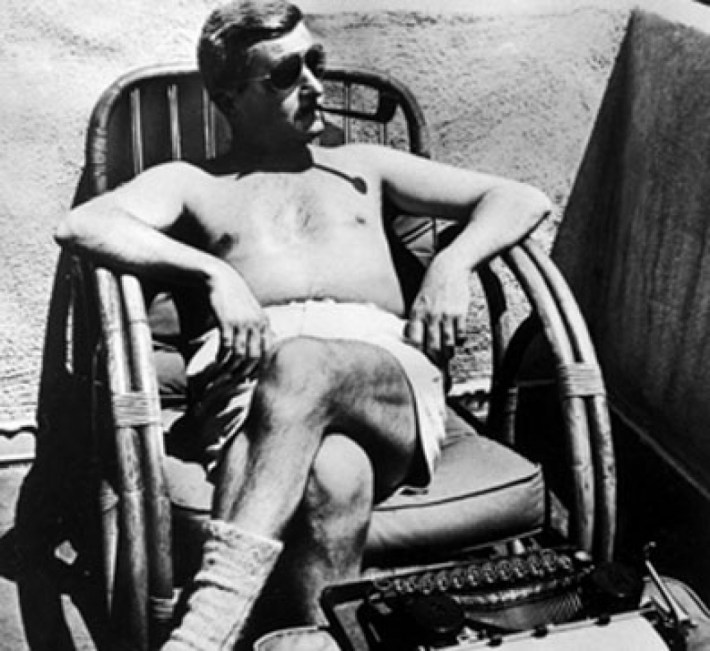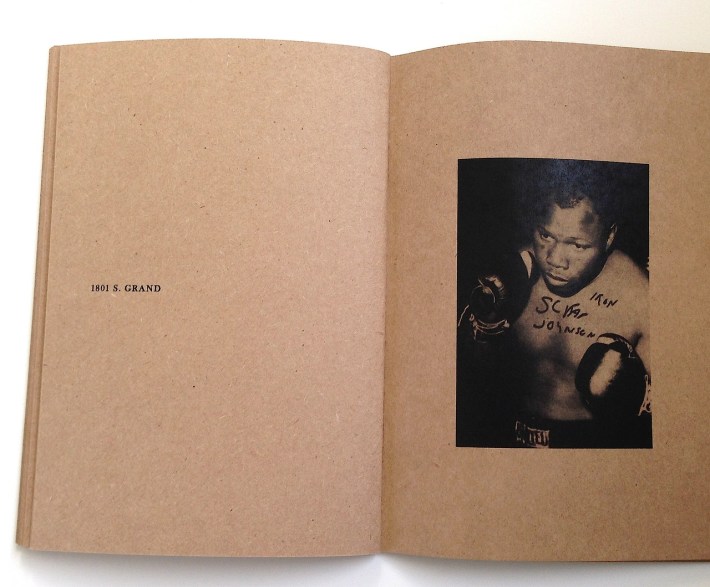
Sam Sweet lives in Highland Park and has written about surfing, music, and Los Angeles culture for the New Yorker and the Paris Review. His latest project is All Night Menu, a 64-page book that is the first in a five-volume series about the lost heroes and miniature histories of Los Angeles. The writing takes to you places you didn't know were real but are right in your backyard and introduces you to people who shaped this city in unseen ways. Created wholly in Los Angeles, the booklet is only available locally, in stores like South Willard, Mollusk Surf Shop, and Anzen Hardware. More info at the end of this interview.
How long have you lived in Los Angeles, and what neighborhoods do you like best?
I moved here in 2007. I like the usual stuff. How can you not? No amount of overexposure can diminish the greatness of driving on Mulholland, or loitering on the rim of the Venice Skate Park, or being on the top floor of the Arclight parking garage. Even so, I think you get the best of Los Angeles in places undefined by any particular attractions. I'm happiest when I'm doing nothing much in Lincoln Heights, Chatsworth, El Segundo. I love Sun Valley because it's so fiercely unattractive but within that labyrinth of auto recyclers is a living culture that is unique to LA. In a more conventional sense, I think San Pedro is one of the prettiest towns in America.
What brought you here originally, and what keeps you here?
In the years before I moved here I made regular visits to stay with a writer friend who lived alone in a tiny bungalow behind a house in Eagle Rock. Each day we would walk to refill his water jugs from the dispensers at Von's on Figueroa and Colorado. It was only a few blocks away but I liked all the details: how each yard was its own accidental jungle, how the smells would change depending on the temperature, how you'd get glimpses of the foothills in the distance. I figured if I could take that much satisfaction in such a mundane activity then Los Angeles was a place I could probably live for the rest of my life.
You've written about Los Angeles for many national publications, how do your editors there view Los Angeles and how has that changed through the years?
Los Angeles used to be exotic and loathed and now it is exotic and loved.
How did All Night Menu come about? Was there a single, crystallizing moment which gave you the idea for this book?
There's a famous photo of William Faulkner sitting on a balcony with his shirt off. It has been reprinted hundreds of times but it was always identified as being taken "in LA" or "in Hollywood." That lack of specificity seemed emblematic of how people treat Los Angeles. Buildings matter; streets matter. They aren't interchangeable. I studied the Faulkner photo, narrowed down the possibilities, and then visited the building to corroborate the view. Researching that building, the reasons that Faulkner stayed there, and what has happened to it since, resulted in a short story that said a lot about a lot of things. Addresses make mythical histories tangible. They make invisible characters palpable. It's the perfect historical principle for a place as unwieldy and atypical as this.
Tell us a little bit about some of LA's secret histories, and why you wanted to write about them?
I was browsing eBay a few years ago and I saw someone in Minnesota was selling these old black ties that had nude pinups painted on them in thin neon lines. There was absolutely no information on who made them or why they were made or who they were sold to. The only point of reference was an inscription on the back fold of the tie that read: "Ty-Craft Ltd. / Hand-painted in Hollywood Calif. / By Noel." To me that's the beginning of a story about Los Angeles. Other times it starts with a character or an unidentified photograph. The first volume includes stories about boxers at the Olympic Auditorium; two Valley girls who were folksingers; and a retired bullfighter who worked as a secretary in Pasadena and kept her former life a secret. I wrote about the first surf shop in Venice and the oldest gang in Los Angeles. The second volume will include stories about Nordskog Laboratories, the Santa Monica studio where Kid Ory recorded the first jazz record in 1922; The Lester Horton Dance Studio on Melrose, where Alvin Ailey trained in the 1950s; and Bert Grimm’s tattoo parlor at the Nu-Pike amusement park in Long Beach. I'm drawn to anything that upsets preconceptions about LA as a monolithic culture. Contradiction is essential. The only criteria are that the stories have to come from all over the map and from every category. The individual stories are concise so that the range of subjects can be broad.
What time period in LA's history do you like the most and why?
The 1980s because it was the point of greatest overlap between the old city and the city that exists today.
Do you have a lucky number?
I do not but I like three-digit numbers the best.
What else are you working on?
For many years I've been writing a book about Richie Lee, Mark Lightcap, and Steve Hadley, three musicians who lived in northeast LA and played together as Acetone until Richie's suicide in 2001. Not many people know them, but if you live here, you know that in the late afternoon Los Angeles has the most beautiful light on earth. It is so powerful that it turns the ugliest buildings into things of beauty. Acetone’s music had that light in it. The book is about how they got it.
What's your favorite taco?
In Cypress Park, a three-man team sets up on an isolated side street called McClure. The street is easy to miss. It's hidden between an ancient trailer park, the MTA Bus Yard, and the Frisco Baking Company. Like all top-notch taco operations, this one is unnamed. I've been there on holidays, I've been there in a downpour. They are never off their game. My order is three tacos de tripa, extra crispy, dressed only with pickled red onions and a squeeze of lime. The smell of fresh bread hangs in the night.
Keep reading for more info and some sample images of the book.
ALL NIGHT MENU VOLUME ONE
By Sam Sweet
2013
Edition of 100
Softcover
$20 retail / $10 wholesale
ABOUT THE PROJECT
This 64-page book is the first in a five-volume series about the lost heroes and miniature histories of Los Angeles. Every volume contains eight original stories, each based on a specific address: 1801 S. Grand; 4828 Pacific Avenue; Clanton b/t San Pedro and Central; etc. By using specific locations as an entry point, the book offers access to the depth and breadth of Los Angeles, a city that is still sometimes regarded as devoid of history and culture. Among its pieces, the first volume includes stories about two boxers at the Olympic Auditorium; the first female folk duo from Van Nuys; the first surf shop in Venice; the Hollywood boarding house where Faulkner lived; an R&B musician who ran a studio out of his Silver Lake basement in the 1950s; a female bullfighter who worked as a secretary in Pasadena and never told anyone about her former life; and Clanton, one of the oldest Latino gangs in Los Angeles.
ABOUT THE OBJECT
Made from 50# kraft stock, the book was printed and assembled by Donahue Printing Co. in Culver City. The first volume was stamped with a custom stamp produced by the Hollywood Rubber Stamp Co., and hand numbered by the author in an edition of 100. The booklet will only be available in Los Angeles and it will not be sold in bookstores. Because it is a book about the character of Los Angeles, and because it was assembled entirely in Los Angeles, it belongs in small-scale shops that specialize in handmade goods and local culture.
ABOUT THE AUTHOR
Sam Sweet has been a professional writer and editor since 2003. He has written about surfing, music, and Los Angeles culture for the New Yorker and the Paris Review. He lives in Highland Park.












